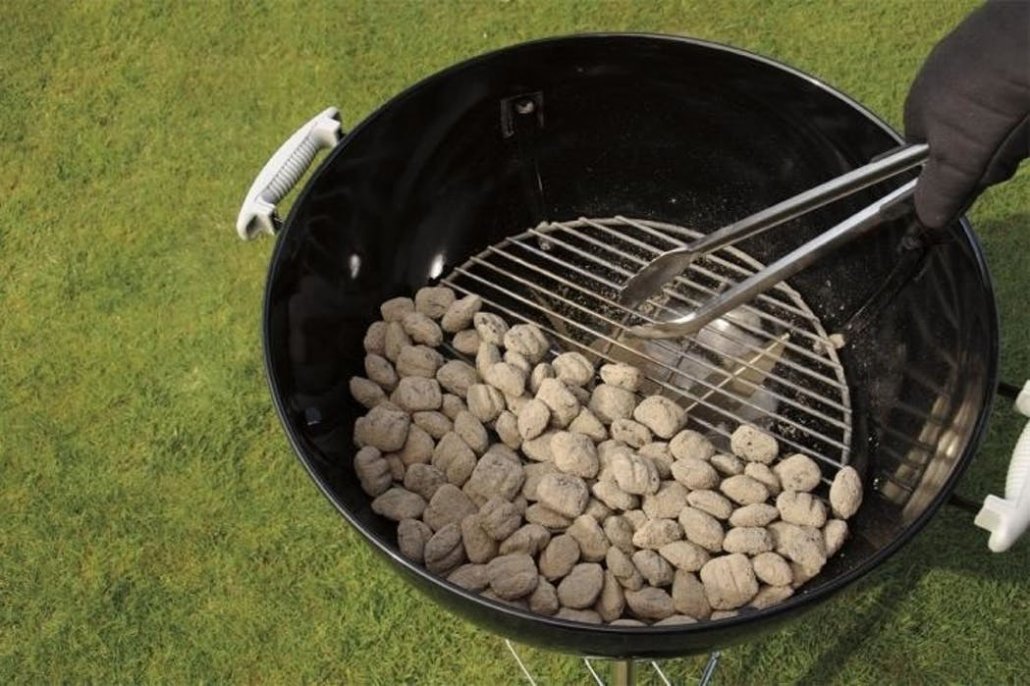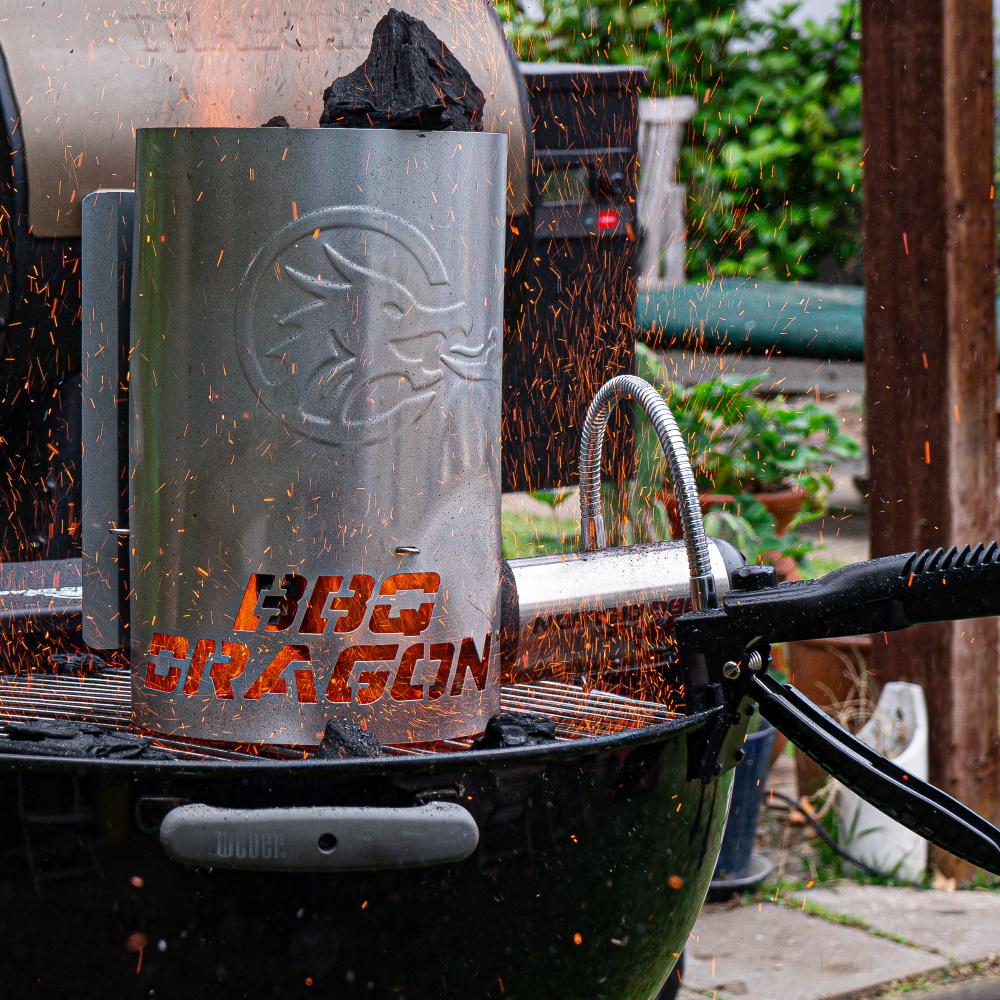Slow Grilled Seasoned Beef Brisket

Image: Cattlemen’s Beef Board and National Cattlemen’s Beef Association
The key to grilling a beef brisket is understanding one important rule – Don’t rush! The goal is to turn a tough cut of meat into a finished product that is tender and packed with flavor. Going low and slow with a covered grill is a must. I suggest having some extra charcoal on hand as grilling a brisket can take upwards of five hours, six, or even eight hours depending on thickness, weather conditions, the temperature inside your grill. Here’s how to get started.
Don’t be Intimidated by Long Grill Times and Zones!
If the idea of grilling a chunk of beef for over five hours, sometimes 6-8 hours, worries you then this post may make you feel better. Why? Because grilling a beef brisket is not that hard once you understand the time involved and the internal temperatures you’re shooting for. The problem most people have with beef brisket is that they rush the process and cook the meat at too high of a temperature.
In fact, that’s almost the whole process for grilling beef brisket! Here’s the basic steps; Season the brisket, start your charcoal with your BBQ Dragon, offset grill – or zone grill, the brisket for a long time at a low temp such as 225 degrees while you gauge your progress with two internal temperatures. More on the temps below. That’s really about all there is to it! The only trick is maintaining a constant low temperature… and being patient.
Wait… ‘Zone’ Grilling?
And, if you’re not sure what offset heat, or zone, grilling is then here’s a quick guide… put the hot charcoal, or heat source, on one side of your covered grill. And the meat on the other side of your covered grill. For round Weber charcoal grills the method is often referred to as “zone” grilling. You have the charcoal on one side, or zone… and the meat on the other side, or opposite zone. A neat trick is using a “circle” or “ring” zone. That’s where the charcoal is spread in a ring along the base of the grill. The middle “zone” is left open, or occupied by a drip pan.

Photo: Weber
Or, the center of the grill is packed, tightly, with charcoal, and the food is pushed off to the edge of the grill grate. This method works great with slowly grilled chicken wings and more. The whole point of offset/zone grilling is to slow things as the meat is not directly over the heat source like you would have if grilling a hamburger, hot dog, or steak. In essence, you’re turning your covered charcoal grill into an offset smoker… well, that’s if you toss in some wood chips.
Meat and Grill Temperatures
Here’s the stumbling block for grilling enthusiasts when it comes to beef briskets. Temperatures and the time it takes to reach the desired internal temps. I’m going to save a bunch of time and give a blanket statement – figure on an average of 1 hour to 1 hour and 15 minutes per pound of beef brisket at a grilling temp of 225 degrees F. And yes, grilling temps and times will vary depending on the thickness of your brisket and how well you maintain a constant grill temperature for low and slow cooking.
Oh, and the weather plays a factor. I know, sounds like an excuse to not be very accurate… but, weather matters. Cooking times differ – even slightly – if it’s snowing, raining, hot as heck, windy, or a perfect day. Keep that in mind and factor it into your estimated cooking times. Generically speaking, a beef brisket will take about an hour per pound, probably a bit more.
Here’s the good news – ever thing in the two paragraphs above is now factored in! No worries! Plan for a long grilling session, factor in the weather, keep plenty of charcoal on hand, some wood chips water pan and shoot for these temperatures;
- A grilling temp of 225 degrees – keep the lid closed as much as possible.
- An internal temperature of 155 – 165 degrees, that’s when you wrap in foil!
- An internal temperature of 195 – 200 degrees, that’s when you remove from the grill and allow to rest for about an hour while still wrapped.
- An internal temp
The Basic Recipe / Method for Grilling a Beef Brisket
Remember, the secret is low and slow! The second secret is seasoning your brisket overnight.
- Boneless beef brisket (about 6-8 pounds)
- 3/4 cup onion, finely chopped
- 1/2 tablespoon paprika
- 2 teaspoons chili powder
- 2 teaspoons freshly ground black pepper
- 1 teaspoon salt
- 1/2 cup water
- 2 cups steak sauce
- 1/2 cup onion, finely chopped
- 2 tablespoons butter
- 1/2 cup ketchup
- 1 tablespoon brown sugar
- 2 teaspoons crushed red pepper
First, if needed, trim the fat from brisket to 1/4 -inch. Combine the onion, paprika, chili powder, black pepper, and salt in a bowl. Rub the mixture evenly over the surface of brisket. YOU CAN STOP HERE for a dry rub brisket. Or, combine the remaining ingredients in a sauce pan and simmer. Allow to cool, and evenly spread over your brisket. Now, cover and chill overnight.
Side note: A brisket consists of two parts, the flat and the point. Your brisket may have both, or one of the two pieces – ask your butcher. The two sections are two different types of muscle and cook slightly different… which is a completely different discussion!
Start your charcoal using your Chimney of Insanity. Place brisket, fat side up, on the grates – baste if needed… close the lid. Now, keep the lid closed and check your brisket every hour or so. When checking, rotate if needed and add more charcoal as needed to maintain the 225 degrees. It will take a few minutes for your grill to recover the internal temps, just keep an eye on your thermometer and try for the 225 mark as best you can.
If you went with the dry rub option, you can use the marinade/sauce for basting.
Internal Temp No. 1 – 155 to 165 degrees! Grill for the 1 hour, 1 hour 15 minute per pound until you hit the internal temperature number one of 155 to 165 degrees. Baste and then tightly wrap the brisket in foil. Return to the grill, check charcoal, close the lid.
What is happening is an internal chemical process is occurring which is known as the “stall” when it comes to low and slow cooking. The internal temps hits a certain point and then stalls. Things seem to linger on and on until finally, after you’ve anguished about adding more charcoal and increasing the grilling temperature, the stall ends and the internal temp of your brisket starts to rise again. This is a critical time. Internal tissue and fat starts to break down which allows the brisket to become tender.
Internal Temp No. 2 – 195 to 205 degrees!
Allow the brisket to cook until you hit an internal temperature of 195 to 205 degrees. Once you pass the stall the internal temperature will rise fairly quickly. When you hit 195, remove the wrapped brisket from the grill, keep it heavily wrapped and allow it to rest in a heavy duty foil pan for an hour. When ready, slice against the grain, serve hot, and enjoy!
That’s a ton of info… but it’s actually just a matter of understanding the process of low and slow cooking when it comes to beef briskets, pork ribs, or a Boston Butt. Factor in the time, season overnight, plan for a long grilling session, and shoot for your internal temps while zone/offset grilling on a covered grill.
Author Bio: Kent Whitaker, also known as “The Deck Chef,” is an award-winning culinary writer and cookbook author. He’s also penned Young Reader, NASCAR and History titles. The former winner of the Emeril Live Food Network Barbecue Contest also covers football, motor sports, and bass fishing. Kent currently lives in East Tennessee with his wife, son, and a couple of dogs that love when he fires up the smoker or grill. You can reach out to Kent at www.thedeckchef.com, Facebook, Instagram, and Twitter.






 Matthew Kent Whitaker
Matthew Kent Whitaker 
 Copyright MKW/GAP
Copyright MKW/GAP 



Trackbacks & Pingbacks
[…] Ok, that was silly but fun. In honor of National Burger Day, here’s an easy way to do a different version of a cheese burger from my cookbook Great American Grilling. What’s great about this recipe is that you can always top with additional cheese when the burgers are fresh off the grill! And, if you feel like this post ignored National Brisket Day… then check out this AWESOME Beef Brisket BBQ Dragon grilling recipe. […]
Leave a Reply
Want to join the discussion?Feel free to contribute!